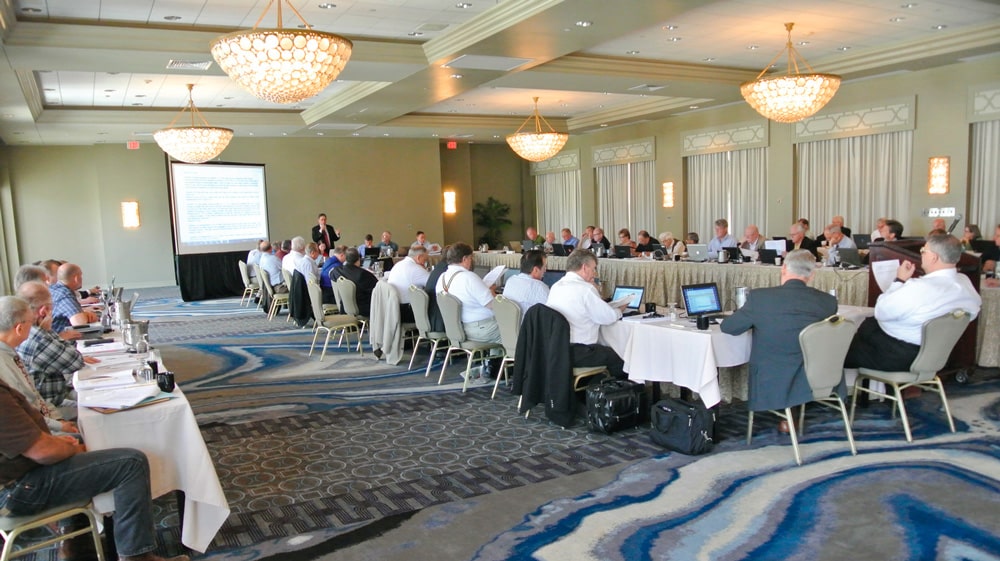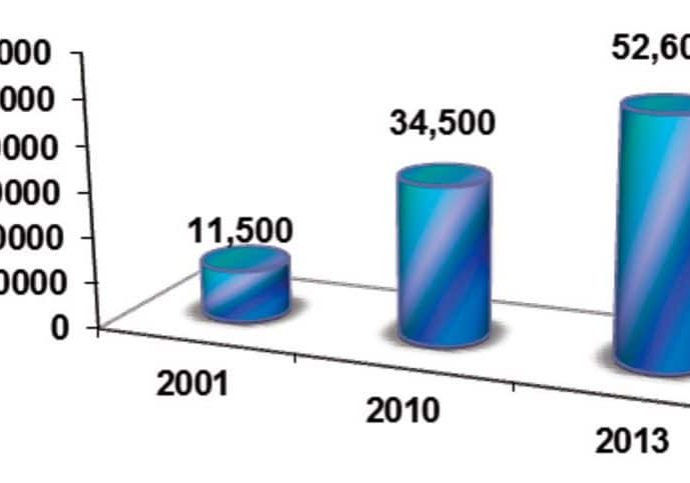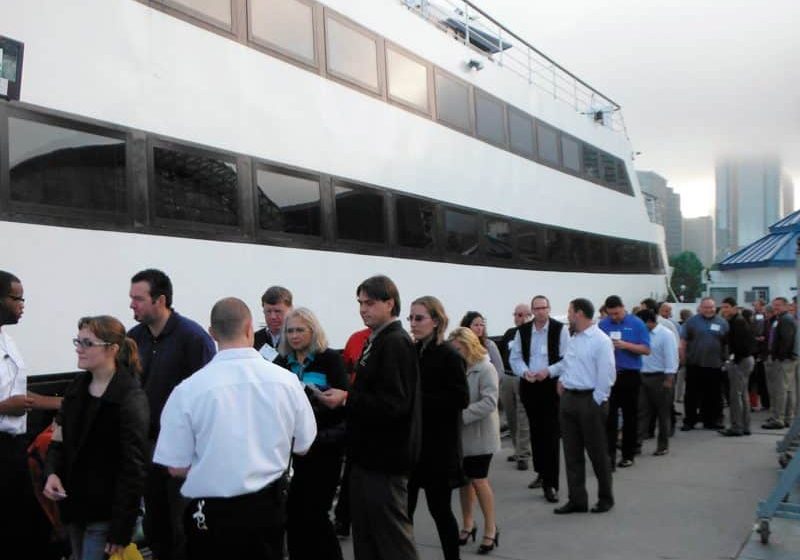ASME A17 Code Committees Meet in New Orleans
Sep 1, 2014

Inquiries spark discussion about performance, requirements and enforcement.
The ASME A17 Standards Committee and various A17 working committees met the week of May 5 in New Orleans. Following is a report on some of the major issues covered.
A17 Standards Committee Meeting
The following subjects were discussed during a daylong meeting. Answers were prepared by the working committees and presented to Standards Committee members for approval.
- Extent of work that must be completed if the motion control of an elevator, or parts involved in this function of an elevator (drives and/or controllers), are upgraded and/or repaired
- Requirements and need for annual cleaning of escalators and the degree to which these requirements are to be enforced during AHJ inspections: It was noted that although the inquirer supports the requirement for annual cleaning of escalators, the question was whether or not this should be enforced during a jurisdictional inspection.
- Performance requirements of various components used in locking devices throughout an elevator control system (inductive and resistive): As the time for these devices to operate varies, an inquirer requested performance values specified in the code be reconsidered and/or better clarified.
- The allowable increase in car weight permitted as the result of an elevator car enclosure upgrade: although the code clearly specifies a maximum car weight increase of 5% above its existing weight as the result of such an upgrade, the issue considered was how the initial car weight should be determined.
- A discussion of design requirements for a proposed metal pull-down stair to access an elevator machine room: as such a device is not currently specified in code design parameters provided by the inquirer, the proposal was ultimately rejected.
- Requirements in the QEI Standard for QEI certifying agencies: the standard references that QEI programs must be accredited in accordance with the international standard requirements specified in the ISO 17024 document or an equivalent standard. However, as ISO 17024 is the only standard that addresses this issue, the inquirer questioned how, if at all, equivalency is to be determined. This issue was not resolved during the meeting and will continue to be considered by the QEI committee and addressed again at a future A17 Standards Committee meeting.
- A discussion of how emergency personnel are to be notified if a machine-room smoke detector is activated while they are using an elevator on Phase II Firefighters’ Service. A proposal was considered, and further direction on this issue will be forthcoming from the committee.
- The newly implemented Occupant Emergency Operation (OEO) incorporated into the A17 code in response to the events of September 11, 2001, was discussed extensively. This is a very complex operation, during which elevators provided with OEO are to be dispatched to the initial floor of incidence so building occupants may use them to evacuate. The complexity results from the additional requirement for elevator systems to also be able to respond to subsequent cascading incidents that may occur throughout the building on a continual basis. Additional study of this inquiry is required, since, at this point, the requirement is essentially a performance-based requirement without specific direction as to how it is to be accomplished. This is the first of what is likely to be many future inquiries on the subject.
After reviewing working committee reports and engaging in an extensive discussion on and rescheduling an appeal of a recently approved code revision, the meeting was adjourned.
International Standards and New Technology Committee Meeting
The A17 International Standards Committee (also known as the US TAG to TC 178) met on the morning of May 8. Following the approval of the previous meeting’s minutes and introduction of committee members and guests, reports on the work of the ISO TC 178 working committees were presented and discussed. These committees are involved in an extensive amount of work on the development of international standards for their assigned aspects of elevator and escalator systems.
The following committees were reported on by the active ISO TC 178 TAG members in attendance: WG 2: Guide Rails; WG 4: Safety Requirements and Risk Assessment; WG 5: Global Essential Safety Requirements; WG 6: Lift Installations, Accessibility and Fire Issues; WG 8: Electrical Issues; and WG 10: Energy Efficiency.
It was also reported that:
- A revised EN 81 (European code) has been approved, and its expected publication date was July 5.
- A liaison was formed between TC 178 and the TC 88 Wind Turbine Committee to determine if requirements for wind-turbine lifts are being developed.
- The next ISO TC 178 Plenary Committee, WG 4 and WG 6 meetings will be held in Pretoria, South Africa, the week of October 23, 2014.
Additionally, a presentation was made on the International Organization for Standardization’s proposed path through 2016 toward developing a common international elevator standard all nations might be able to agree upon and work toward adopting. The International Standards Committee’s immediate task at hand is to develop escalator requirements.
Following the International Standards Committee meeting, the A17 New Technology Committee meeting commenced, and the following task group reports were presented: “Conformity Assessment”, “GESRs and Risk Assessment”, “Wind Turbine Elevators”, “Outside Emergency Elevators,” and “Document Organization.” A presentation was also made on the process being considered to study the potential convergence of the EN 81, A17/B44 (North American) and JIS (Japanese) elevator codes.
The official meeting minutes, which will be made available to committee members prior to their next meetings, will provide complete documentation of all issues discussed during the meetings. The next series of A17 Code Committee meetings will be held during the week of September 29 in Chicago Illinois.
Get more of Elevator World. Sign up for our free e-newsletter.









